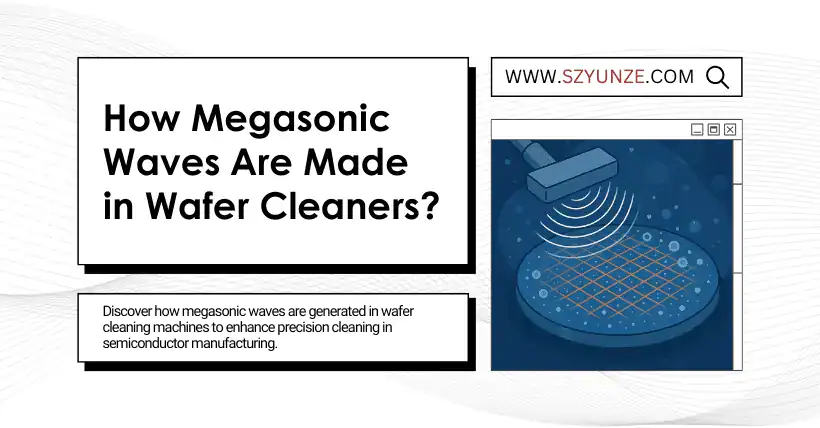Some single-wafer cleaning machines are also equipped with megasonic systems. How is this achieved? How many types of megasonic generation methods are there?
Classification of wafer cleaning machines:
Wafer cleaning machines are generally divided into: immersion-type cleaning machines and spin-spray-type cleaning machines. Immersion-type machines are usually used for batch cleaning, with adjustable parameters including temperature, chemical concentration, megasonic frequency, power, and swing amplitude.
Spin-spray-type machines are typically used for single-wafer cleaning, with adjustable parameters including temperature, chemical concentration, megasonic frequency, power, chemical flow rate, air pressure, distance between the nozzle and the wafer, swing arm speed, etc.
Megasonic generation methods:
There are three types: tank-type megasonic transducer plate, spray-type megasonic nozzle, and proximity megasonic cleaning head.
Tank-type megasonic transducer plate:
In tank-type megasonic cleaning, the megasonic emitter is usually placed at the bottom of a water tank, and wafers are placed in the tank for cleaning. The advantage of this method is ease of use and the ability to clean products in batches, hence it is also referred to as “batch-type” megasonic cleaning.
Spray-type megasonic nozzle:
Spray-type megasonic cleaning shapes the megasonic emitter into a nozzle, with megasonic waves carried by the water flow falling onto the wafer. Compared to the tank-type device located at the bottom of a process tank, it offers higher acoustic transmission efficiency.
Proximity megasonic cleaning head:
Proximity megasonic is an optimized method derived from spray-type and tank-type systems. It places the megasonic emitter very close to the wafer surface, leaving a gap no greater than 3mm. Cleaning fluid flows through the gap and fills it, allowing ultrasonic waves to propagate in the liquid and complete the cleaning process.
Related:
- How to Fix Wafer Ripple Defects After Surface Cleaning?
- Best Way to Clean Silicon Wafers for Top Performance
- Wafer Wet Cleaning: Required Nitrogen Purity Levels
- Wafer Cleaning Expiry Time: What You Must Know

Disclaimer:
- This channel does not make any representations or warranties regarding the availability, accuracy, timeliness, effectiveness, or completeness of any information posted. It hereby disclaims any liability or consequences arising from the use of the information.
- This channel is non-commercial and non-profit. The re-posted content does not signify endorsement of its views or responsibility for its authenticity. It does not intend to constitute any other guidance. This channel is not liable for any inaccuracies or errors in the re-posted or published information, directly or indirectly.
- Some data, materials, text, images, etc., used in this channel are sourced from the internet, and all reposts are duly credited to their sources. If you discover any work that infringes on your intellectual property rights or personal legal interests, please contact us, and we will promptly modify or remove it.



